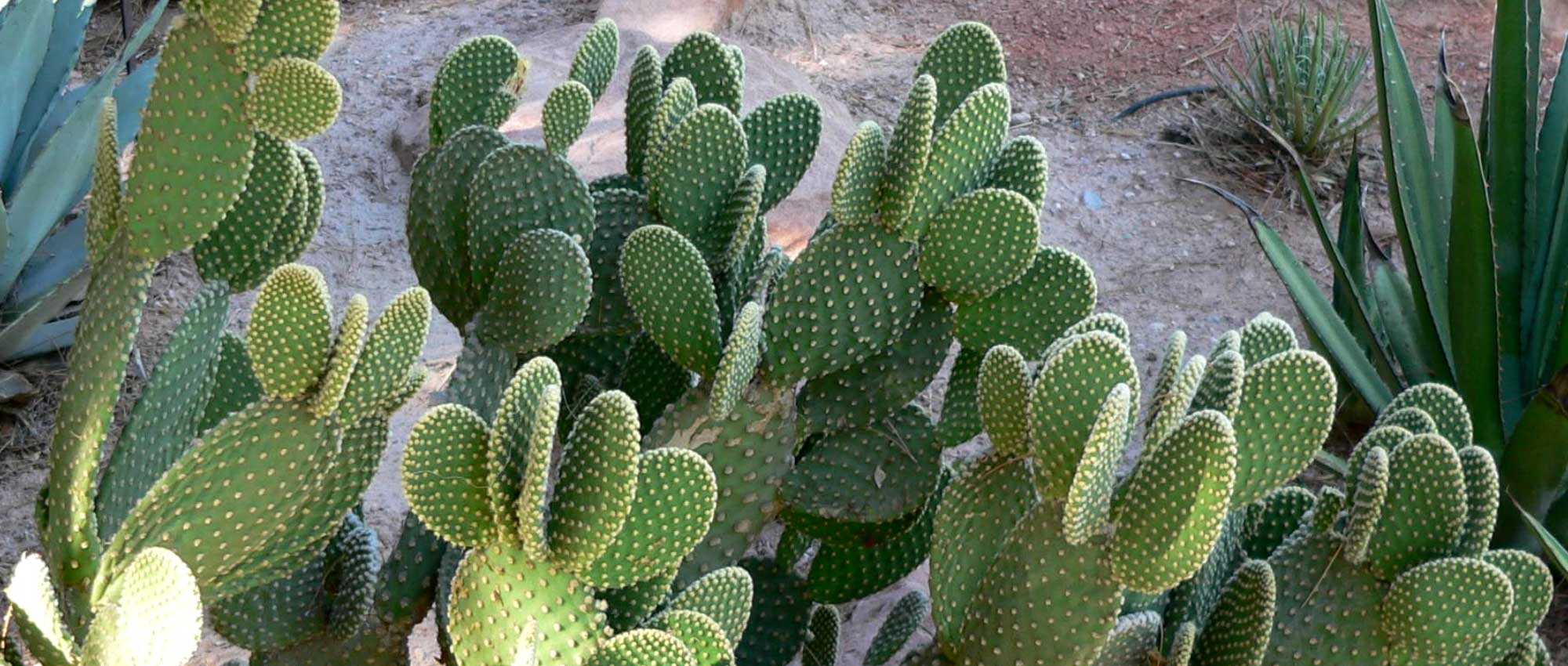
Opuntia, prickly pear cactus: planting, cultivation and care
Contents
Opuntia in a nutshell
- Opuntia is an unusual cactus with flattened stems shaped like prickly pear pads
- Best known is the Barbary fig, Opuntia ficus-indica, which produces edible fruit
- It is a drought-resistant plant, almost maintenance-free, ideal for dry gardens, rockeries and exotic gardens
- Opuntias need sun and well-draining soil
- They are very easy to multiply by propagation by cuttings!
- You can easily find very hardy species, some tolerating −15 to −20 °C
A Word from Our Expert
Opuntia, or prickly pear cacti, are very distinctive for their flattened-segment shapes. They have flat, ovate, fleshy stems that bear small cushions from which thorns emerge. They also put on a splendid display of flowers: flowers are large, with many petals in warm colours (often yellow, orange, red…).
There are many species, but the Barbary fig (Opuntia ficus-indica) is probably the best known, renowned for its edible fruits. Other Opuntia species and varieties vary in size (some are small and low, creeping, others can become tall and imposing), as well as in shape and colour of prickly pears (from blue-grey to light green). Moreover, some are quite frost-tender while others tolerate down to −20 °C.
Opuntia will thrive in a warm, sunny spot. Like other cacti, they require little maintenance, are drought-resistant and grow easily with minimal attention. However, they are susceptible to scale insects, and some species will need protection in winter unless living in a region with a mild climate. They are also plants very easy to multiply: propagation by cuttings is all that’s needed — simply remove a prickly pear pad and plant it in soil.
Description and botany
Botanical data
- Latin name Opuntia sp.
- Family Cactaceae
- Common name Oponce, Prickly pear cactus
- Flowering depending on variety, between May and September
- Height between 10 cm and 3 m
- Exposure full sun
- Soil type well-drained, even sandy
- Hardiness quite variable, between +5°C and -20 °C.
Opuntia comprises nearly 200 species of cactus, generally shrubby and made up of flattened, thorny segments in the shape of prickly pear pads… hence common name Prickly pear cactus! These are succulent plants: they store water and mineral nutrients in their swollen stems, which allows them to withstand drought. The best-known and most cultivated Opuntia is prickly pear, Opuntia ficus-indica. Different Opuntia species and varieties are not always easy to identify, as some resemble one another closely.
Opuntia are cacti: they belong to family Cactaceae, which includes more than 2,200 species. These are plants adapted to drought, with thick tissues that store water and mineral reserves. Cacti generally bear numerous thorns and produce large, attractive flowers. They often adopt unusual shapes and favour hot, dry climates. Cacti are sometimes confused with other succulent plants of similar appearance, such as euphorbias or crassulaceae.
Cylindropuntia cacti are very close to Opuntia: they were formerly placed in the same genus. They were separated because Opuntia typically have flattened stems, the pads, whereas Cylindropuntia have cylindrical stems.
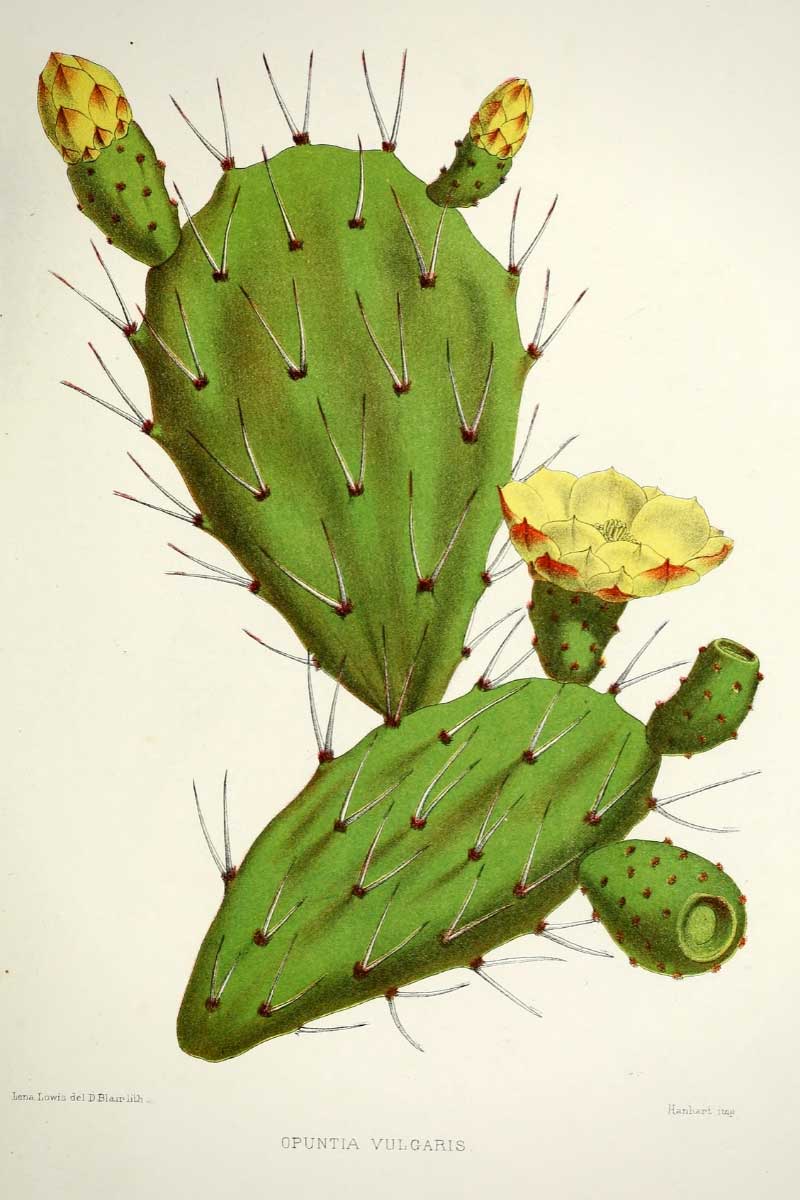
Opuntia vulgaris: Botanical illustration
Like almost all cacti, Opuntia originate from the American continent. They occur from United States down to Argentina. Mexico hosts great Opuntia diversity and is the native homeland of prickly pear. Being widely cultivated, this species has become naturalised in several regions of the world, notably around Mediterranean basin. Fruits are eaten in various forms in Mexico; a fermented drink (colonche) is even made from them.
Opuntia grow mainly in arid regions, which explains their drought resistance. In the wild, some Opuntia species grow on plains while others occur at elevation in mountains (some reach 4,000–5,000 m altitude!). This probably accounts for wide variation in hardiness: some species are frost-tender while others tolerate down to −20 °C.
Opuntia takes its name from ancient Greek town Oponte. Specific epithet ficus-indica means “fig of the Indies” because it was brought back from America by Christopher Columbus, who believed he had reached India. Name “Figuier de Barbarie” (barbary fig) was given because it was widely eaten and cultivated in Maghreb, in Berber regions. It is also called nopal in Mexico. In English it is known as Prickly pear cactus. In French it is sometimes called Poire-Cactus, probably because of the pear-like shape of the fruit.
Opuntia are generally characterised by a succession of flat, ovate and fleshy cladodes, commonly called “pads”. These are in fact modified stems that have swollen and flattened.
Some Opuntia have a very different habit: instead of forming pads, they become shrubby with many long, thin, highly ramified stems. This is the case for Opuntia leptocaulis, O. versicolor, O. spinosior… They resemble small leafless trees with only thorny branches.
Opuntia grow relatively quickly and generally develop a fairly wide, spreading habit. Opuntia ficus-indica can reach 4 m in diameter and 6–7 m in height. It is however uncommon for it to attain such dimensions in garden conditions. A few Opuntia form true trees, such as Opuntia echios, with an impressive trunk! Conversely, there are dwarf Opuntia, like Opuntia clavarioides or Opuntia compressa, which do not exceed 30 cm in height. Opuntia may be erect, shrubby, or sprawling.
Opuntia flower in spring or summer. Depending on variety, flowering may occur between May and September. Under warm climates, flowers may appear throughout year.
Opuntia flowers are very attractive and typical of cactus flowers. They are large, solitary, regular in shape with radial symmetry. Flowers of prickly pear, Opuntia ficus-indica, measure between 5 and 10 cm in diameter. Flowers are generally smaller in other species. Flowers are bisexual, bearing both stamens and pistils.
Flowers consist of numerous coloured tepals, plus smaller green outer tepals. The flower also has a hypanthium: a floral receptacle that encloses the inferior ovary and supports bases of tepals and stamens. Tepals and stamens are inserted in a spiralled arrangement. At centre, among the petals, flower bears very many stamens.
Flowers display warm, vivid colours: yellow, orange, red or pink. Those of Opuntia ficus-indica are yellow or orange.

Flowering of Opuntia ficus-indica (photo Alvesgaspar), Opuntia phaeacantha (photo Anton Croos – art-of-photography-com.blogspot.com) and Opuntia phaecantha ‘Mojavensis’
Opuntia are made up of a succession of cladodes, often called “pads”. They are usually ovate and flattened but thick and fleshy. Colour ranges from green to blue‑green, sometimes slightly glaucous. These are actually modified stems that have swollen and flattened, and their thorns are modified leaves.
Pads can be very large, as in Opuntia robusta. They are elongated in Opuntia engelmannii var. linguiformis.
Pads of Opuntia bear white areoles (small cushions). These areoles bear both tufts of small prickles, hair-like in appearance, called glochidia, and some large, long thorns. Glochidia can detach easily from plant and embed in skin on contact.
Thorns of Opuntia are fairly large and may reach up to 2 cm long. Some Opuntia lack thorns entirely. Others, by contrast, are completely covered, such as Opuntia erinacea var. ursina. Thorns may form a whitish down that entirely covers cladodes, giving plant a pilous appearance.
As with most cacti, Opuntia have replaced leaves with thorns. Leaves cause water loss through stomata (pores in leaf epidermis). By eliminating leaves, plant becomes more drought-resistant. Thorns provide protection against herbivores. In wild, thorns also help capture morning dew, which condenses on them and supplies a little water to plant. Likewise, for Opuntia bearing very many thorns, such as Opuntia erinacea var. ursina, these provide protection from harsh sun rays by offering some shading for the plant.
Prickly pear, Opuntia ficus-indica, is renowned for its edible fruits. Fruits appear on top of pads, usually on the edge, and ripen in late summer (between July and September). They are berries, yellow, orange or purple in colour, and ovoid in shape. They measure between 4 and 10 cm in length. They bear small thorns, so they must be peeled before eating. Flesh is sweet and contains small black seeds. Fruit is rich in fibre, vitamin C and magnesium, and also has antioxidant and anti-inflammatory properties.
In the wild, fruits are much appreciated by many animals inhabiting arid environments. By consuming them, animals ensure seed dispersal.

Fruits of Opuntia stricta (photo Peripitus) and Opuntia ficus-indica
Read also
How to water a cactus?Main species and varieties of Opuntia
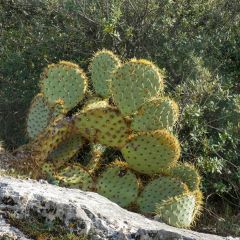
Opuntia engelmannii var. rastrera - Prickly Pear
- Flowering time June, July
- Height at maturity 60 cm
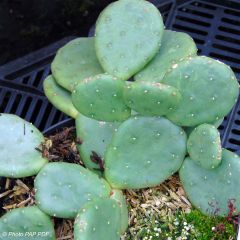
Opuntia compressa Millevaches - Prickly Pear
- Flowering time June, July
- Height at maturity 30 cm
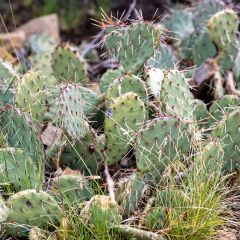
Opuntia phaeacantha Mojavensis - Prickly Pear
- Flowering time June, July
- Height at maturity 2 m
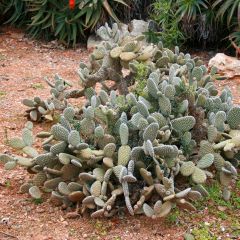
Opuntia microdasys - Prickly Pear
- Flowering time July, August
- Height at maturity 60 cm
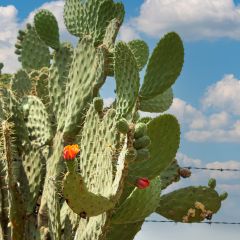
Opuntia engelmannii var. alta - Prickly Pear
- Flowering time June to August
- Height at maturity 1,50 m
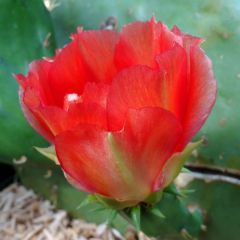
Opuntia engelmannii var. indheimeri - Prickly Pear
- Flowering time July to October
- Height at maturity 2 m
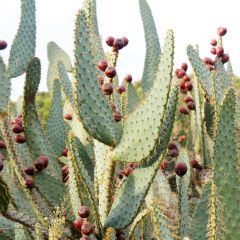
Opuntia engelmannii var. linguiformis - Prickly Pear
- Flowering time June, July
- Height at maturity 1,50 m
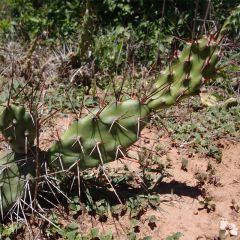
Opuntia anacantha - Prickly Pear
- Flowering time July, August
- Height at maturity 80 cm
Discover other Opuntia
View all →Available in 1 sizes
Available in 1 sizes
Available in 1 sizes
Available in 1 sizes
Available in 1 sizes
Available in 1 sizes
Available in 1 sizes
Available in 1 sizes
Available in 1 sizes
Available in 1 sizes
Planting
Where to plant?
As it is a cactus, a plant that enjoys warmth, we recommend planting Opuntia in full sun! It is important that it benefits from excellent light. Opuntia need a sunny position to be able to flower. This also helps them to grow well and to produce fruit. You can also place it against a south-facing wall. We also advise choosing a spot protected from cold winds.
Opuntia is particularly suited to seaside gardens and to cultivation under a mild climate, for example in Mediterranean regions. If you live in a cold region, you can grow prickly pear in a pot so you can easily move it under shelter in winter. However, some Opuntia species are particularly hardy and can grow in cool climates. When possible, it is always preferable to plant Opuntia in open ground. It will do better there than in a pot, especially as some species reach very large dimensions.
Place it in well-draining soil. Opuntia dislike heavy soils that retain water. Do not hesitate to improve drainage by adding coarse sand, gravel or stones, or by planting on a raised mound. Sloping or raised beds allow water to drain away more easily.
You can place it in a rockery, a dry garden, or an exotic-style border. Opuntia is perfect with agaves, cacti and succulent plants. Opuntia can also be used as a defensive hedge.
Once established, Opuntia grow fairly quickly if conditions suit them. Over time, they can reach substantial proportions.
When to plant?
We recommend planting Opuntia in spring, as soon as frost risk has passed. Planting is also possible in summer. Avoid, however, periods of very high heat.
How to plant?
- Start by preparing the ground. You can create a raised mound or rockery to allow water to run off.
- Dig a planting hole.
- If necessary, add draining materials (coarse sand, gravel…)
- Remove your Opuntia from its pot and plant it.
- Replace the substrate around it.
- Water lightly.
→ Also read: how to plant Opuntia in open ground?
You can also grow Opuntia in a pot, as this will allow you to bring them indoors easily for winter.
- Choose a fairly wide pot. It must have drainage holes. Place a layer of gravel, clay balls or broken pot shards at the bottom.
- Fill with a mix of potting compost and coarse sand, with small gravel if desired, or use a cactus compost.
- Plant your Opuntia.
- Replace substrate around it and firm gently.
- Place the pot in a warm, sunny spot.
Remember to bring the pot indoors if temperatures turn cold. The advantage of pot cultivation is being able to overwinter the plant easily, protecting it from cold by moving it, for example, into a conservatory.
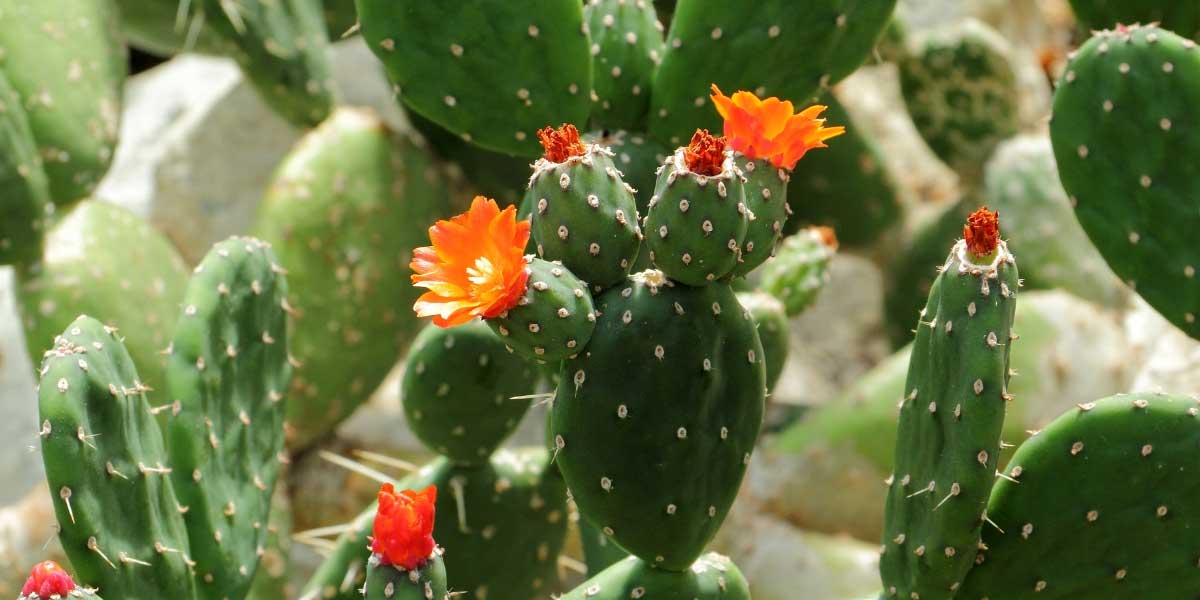
Opuntia quitensis (photo C. T. Johansson)
Read also
7 iconic cacti and succulent plantsCare
As Opuntia is a cactus, it is resistant to drought and dislikes excess moisture. If you grow it in the ground, it is generally not necessary to water. In a pot, you can water occasionally, without excess. Make sure to let the substrate dry out between waterings, and avoid water standing in the saucer. You can stop watering in winter.
Unless you live in a mild climate, species that are not very hardy will need protection from cold in winter. Bring potted species into a conservatory or greenhouse, placing them in a very bright spot.
If you grow Opuntia in a pot, remember to repot from time to time, preferably in spring. You can also apply a little liquid feed once a month, from spring to autumn. This favours flowering and fruiting.
Opuntia is susceptible to mealybugs and scale insects. The former appear as white, cottony clumps, while the latter look like brown bumps. These parasites attach to the prickly pears and weaken the plant. You can get rid of them using a mixture of black soap, 90° alcohol and vegetable oil.
Propagation: propagating Opuntia
You can easily multiply Opuntia by propagation by cuttings. This will allow you to place it in other parts of your garden, give some to friends or family, or keep your young plants in case of frost. It is also possible to sow seeds in spring, but this technique is less straightforward and less commonly used.
Propagation by cuttings
Opuntia is very easy to propagate by cuttings. Best time to do this is late spring or early summer.
As Opuntia bears thorns, you can protect yourself by handling it with gloves, or by using cardboard or polystyrene to support the prickly pears.
- Take a cladode (prickly pear) by cutting it cleanly with a sharp knife. Avoid choosing a very young one; it should be at least six months old.
- Let the wound dry for at least several days (even several weeks) by placing the prickly pear in a dry spot. (The prickly pear can be kept for a long time out in the open. If you wait to plant it, you may even see roots developing!)
- Prepare a pot with a well-draining substrate (cactus compost or a mix of soil and sand, with a drainage layer at the bottom)
- Plant the prickly pears, upright in the pot, inserting their base slightly (2 to 3 cm deep).
- Replace some substrate around if necessary, and firm gently. You can use small stones to keep them upright.
You can then water very lightly, and place the pot in a bright spot, avoiding direct afternoon sun.
We recommend slightly moistening the substrate from time to time, as this favours rooting of the plant.
But it is important to avoid excess moisture, which can cause the prickly pear to rot.
It is also possible to propagate Opuntia by simply laying a prickly pear flat on the substrate.
Opuntia cuttings take easily. It even happens that the plant propagates itself: when prickly pears fall to the ground, they tend to take root there. If you notice this, you can take these natural cuttings and plant them elsewhere, or pot them.
→ Find out more in our tutorials : Propagate cacti and succulents and Propagate Opuntia, the prickly pear cactus.
Use and combine in the garden
You can use Opuntias to create a rockery of succulent plants and exotic plants. Arrange a raised or sloping bed (water will drain easily), add some large stones, and plant a few Opuntias among Agaves, Sedums, Carpobrotus, Phormium, Aloes, Aeoniums… You can also add small palms and yuccas. Don’t hesitate to include some delicate flowerings, such as those of Tulbaghia violacea or Bulbines.
You will obtain a beautiful exotic-style garden if you pair Opuntia with palms, with plants with very large foliage (Fatsia japonica, Phormium…) and with some showy flowerings, such as those of Kniphofias and Eucomis.
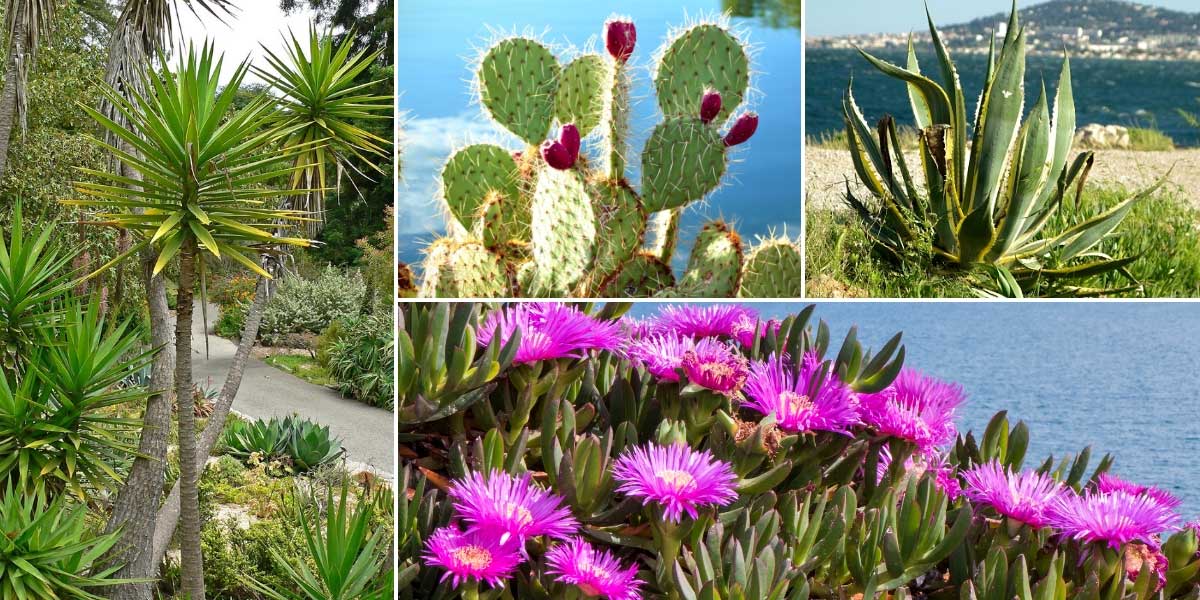
You can easily integrate Opuntia into an exotic-style garden. Yucca aloifolia (photo Stan Shebs), Opuntia, Agave americana ‘Variegata’ and Carpobrotus (photo Digitalsignal)
Opuntia are particularly suited to seaside gardens, and especially to cultivation in Mediterranean regions. You can pair them with Eryngium maritimum, Artemisia, Senecio, cistus, Helianthemum… To add some height, include a few olive trees, palms, Lagerstroemia and oleanders, and train bougainvillea up a façade or pergola. Include plants with silvery or aromatic foliage: Helichrysum, Santolina, lavender, thyme, sage… Also benefit from the large leaves of Agaves, which will bring great volume to the bed. Finally, consider the majestic flowering of agapanthus.
⇒ More combinations in our advice sheet : Pairing Opuntia
Useful resources
- Discover our range of Opuntia
- Read our article to find out which Opuntia to plant in your region?
- Get inspiration from this Exotic atmosphere to pair with Opuntia!
- Discover our recipe ideas for using prickly pears in cooking.
- Our range of exotic-style plants
Frequently asked questions
-
My Opuntia’s prickly pear pads bear small white farinose or brown clumps. What should I do?
These are mealybugs or armoured scale insects. They attach to the prickly pears and extract sap, which weakens the plant and can cause local discolouration. You can treat them with a mixture of black soap, vegetable oil and 90% alcohol, diluted in water.
-
Prickly pear pads are becoming soft and sagging. Why?
Your plant has probably suffered from a cold snap or excess moisture (causing tissues to rot). If the substrate is wet, stop watering. Don’t hesitate to take cuttings to preserve your plant.
- Subscribe!
- Contents
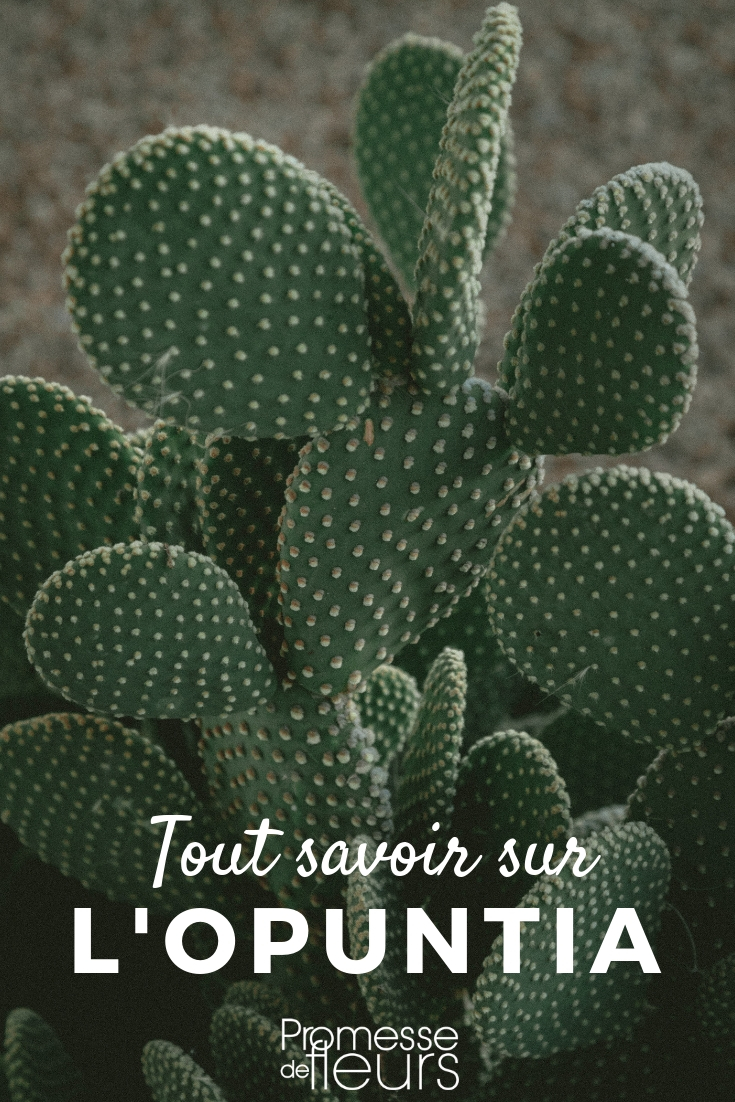































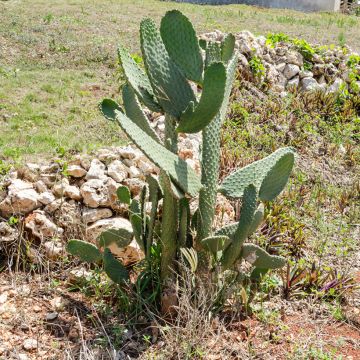
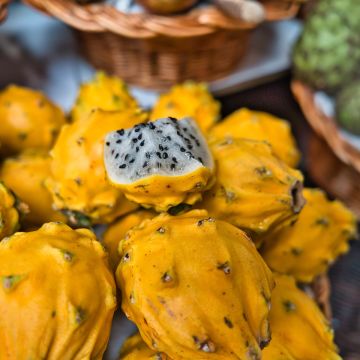
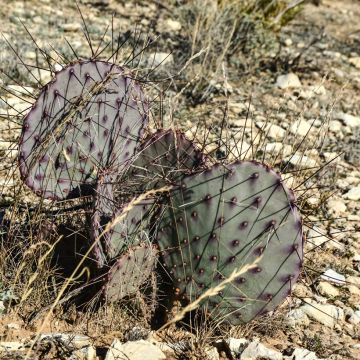
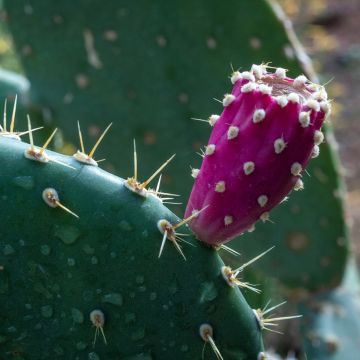
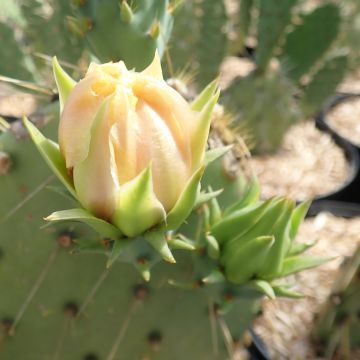
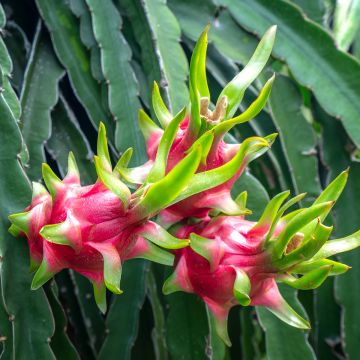
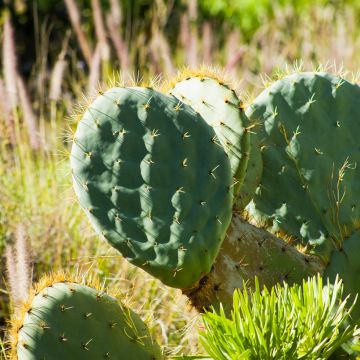
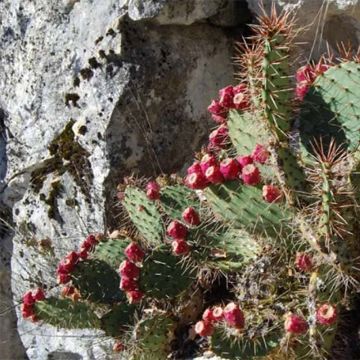
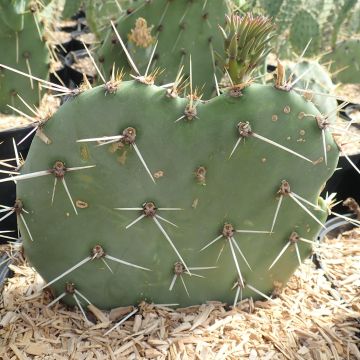
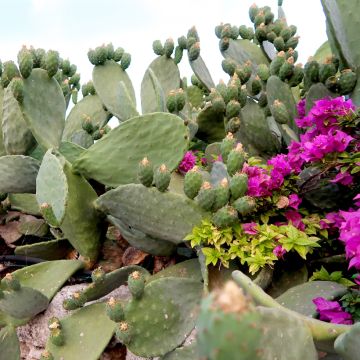
Comments